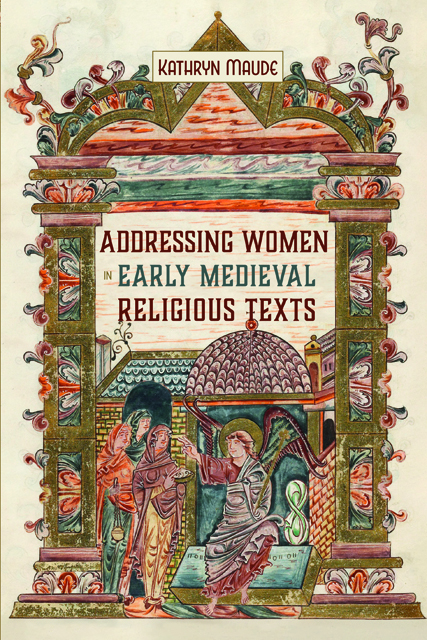Book contents
- Frontmatter
- Dedication
- Contents
- Acknowledgements
- Abbreviations
- Introduction: Behealde ge wif: Addressing Women in Early Medieval England and Scotland
- 1 Addressing Laywomen in Old English Sermons
- 2 Addressing the Recluse in Aelred’s De institutione inclusarum and Goscelin’s Liber confortatorius
- 3 Addressing Holy Women in the Life of Christina of Markyate and the Life of Margaret of Scotland
- 4 Addressing Nuns in Goscelin’s Hagiography for Wilton and Barking Abbeys
- Conclusion: Plebs ecclesiastice discipline: Addressing Women to Include and Exclude
- Bibliography
- Index
- Gender in the Middle Ages
3 - Addressing Holy Women in the Life of Christina of Markyate and the Life of Margaret of Scotland
Published online by Cambridge University Press: 14 January 2023
- Frontmatter
- Dedication
- Contents
- Acknowledgements
- Abbreviations
- Introduction: Behealde ge wif: Addressing Women in Early Medieval England and Scotland
- 1 Addressing Laywomen in Old English Sermons
- 2 Addressing the Recluse in Aelred’s De institutione inclusarum and Goscelin’s Liber confortatorius
- 3 Addressing Holy Women in the Life of Christina of Markyate and the Life of Margaret of Scotland
- 4 Addressing Nuns in Goscelin’s Hagiography for Wilton and Barking Abbeys
- Conclusion: Plebs ecclesiastice discipline: Addressing Women to Include and Exclude
- Bibliography
- Index
- Gender in the Middle Ages
Summary
Creating an intimate relationship with a holy man is one way in which holy women could be addressed, and thereby have their Christian lives taken seriously. These spiritual relationships between a male confessor and a female mystic have been seen as a predominantly late medieval phenomenon in previous scholarship. Here I argue that, in the Life of Margaret of Scotland and the Life of Christina of Markyate, we see twelfth-century attempts to manage these intimate relationships between a holy woman and her confessor. In Chapter Two, I demonstrated that the writers of both the Liber confortatorius and De institutione inclusarum managed intimate male–female relationships through the direct address from one man to one woman, the men speaking to their interlocutors as sister or beloved. The Life of Margaret of Scotland and the Life of Christina of Markyate are also invested in managing the intimate relationship between holy man and holy woman through address. In these Lives, though, the texts are not addressed to the holy woman in the relationship but present that relationship through address to another.
Both Lives create an intimate relationship with their subject using a managed discourse of intimacy and distance. In the Life of Margaret of Scotland, addressed to Margaret’s daughter Matilda, the potentially dangerous intimacy of the close relationship between holy woman and holy man is presented as unproblematic. As Margaret is dead, Turgot can present their relationship to Matilda however he pleases, because Matilda cannot access an independent relationship with her mother. Margaret solidifies into a model of virtues, and Turgot addresses this static depiction of Margaret to Matilda in order to shape her into a pious queen. In the Life of Christina, though, the intimate relationship between Abbot Geoffrey and Christina is dangerously ongoing, as both Geoffrey and Christina were alive when the text was written. Both figures are directly addressed in the Life: the address to Geoffrey by the narrator and the address to Christina by divine voices in her visions teach them how to manage their behaviour towards each other in their potentially dangerous relationship. The two Lives, then, are principally invested in managing male–female relationships: Matilda’s relationship with her mother and Christina’s relationship with her sisters by blood and in religion are deliberately downplayed.
- Type
- Chapter
- Information
- Addressing Women in Early Medieval Religious Texts , pp. 89 - 128Publisher: Boydell & BrewerPrint publication year: 2021



